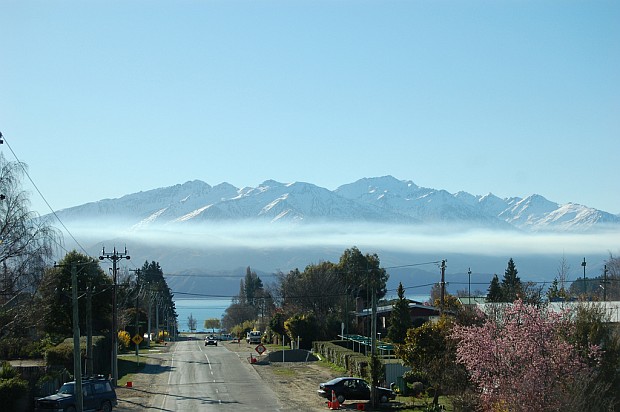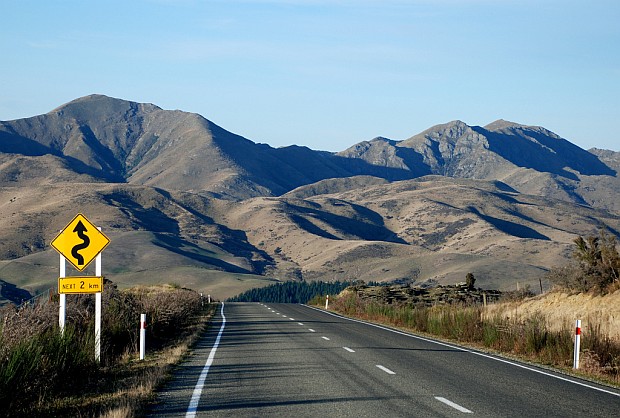NZ cavalcade heads for Wanaka hoedown
 17 Feb 2010 - Retracing the footsteps of New Zealand’s early settlers across some of the country’s most remote and dramatic landscapes has become an annual pilgrimage that will see the 2010 Goldfields Cavalcade journey end with a hoedown in Wanaka, Central Otago. The popular event is based on the first Cobb & Co stage-coach trip which left the Provincial Hotel in Dunedin to cross the Dunstan Trail to Central Otago’s Dunstan Goldfields on 22 November 1862.
17 Feb 2010 - Retracing the footsteps of New Zealand’s early settlers across some of the country’s most remote and dramatic landscapes has become an annual pilgrimage that will see the 2010 Goldfields Cavalcade journey end with a hoedown in Wanaka, Central Otago. The popular event is based on the first Cobb & Co stage-coach trip which left the Provincial Hotel in Dunedin to cross the Dunstan Trail to Central Otago’s Dunstan Goldfields on 22 November 1862.
A decision to re-enact that journey in 1991 saw hundreds of people, horses, coaches and wagons take part in the first Goldfields Cavalcade, which has now developed into a golden opportunity to mix history with intrepid travel.
Central Otago Gold Rush
Central Otago was the scene of New Zealand’s biggest gold strike, and the discovery in the 1860s led to a rapid influx of foreign miners. Remnants of the mining hey day are still very much in evidence, and each year the Goldfields Cavalcade chooses a different destination or host town so participants have the opportunity to learn more about the region's association with the gold rush.
Trails and timing
Nine different trails make up the Goldfields Cavalcade:
- three walking trails that take three to five days and cover tracks and land not normally available to the public
- four riding trails that take six to seven days crossing Otago’s dramatic hills and rivers
- two trails are suitable for wagons that take five days each, and are a good option for anyone wanting to enjoy the scenery with an element of comfort.
The trails cover the rugged hills, rock-faced gullies and tussock covered plains of Central Otago, a region famed for its vast open spaces, dramatic scenery and sparsely populated settlements. Timing of the cavalcade has been changed from the traditional November date and this month's event sold out long ago. The cavalcade will end on the shores of Lake Wanaka on 27 February.
Hotels und Unterkünfte auf der Südinsel

No walk in the park
Logistics mean catering for large numbers is difficult, and cavalcade organisers limit each trail to between 50 and 80 people. Most taking part in the horse trails ride their own horses, but there are a few horses available for hire. A moderate to high level of fitness is required for all trails - for both horse and participant. Each trail is led by a ‘trail boss’, several ‘wranglers’ and leaders who have planned the route and guide the cavalcade. The journey is considered more apt for the ‘intrepid’ traveller as no luxuries or showers are available en route.
Wanaka Cavalcade finale
The cavalcade will end when all trails have come together for a grand parade and hoedown in Wanaka. Fnale celebrations will start at high noon on Saturday, 27 February with a parade through the centre of Wanaka town. Cavalcade walkers dressed in historical costumes will join local community groups who’ve pledged to support the event. Horses and wagons will mix with other historical vehicles and early forms of transport for the parade that finishes at Pembroke Park with food, stalls and entertainment.
An old-fashioned "knees-up and chin wag" at the Lake Wanaka Centre will ensure cavalcaders have the opportunity to recount tales of their own experience - 150 years on - of the historic Cobb & Co journey.
Long-lasting friendships
Cavalcade coordinator Roberta Laraman says the event is likely to see some participants taken out of their comfort zone. Laraman likens the experience to that of the old pioneers who were thrown together in migrant ships -"Irish, Scots, Welsh and English who normally had nothing much to do with each other."
Hotels und Unterkünfte auf der Südinsel
"They came to this raw, new land to realise they needed each other, became neighbours and often used each other’s skills to survive. "I see a similarity with cavalcaders where an almost instant acceptance and sharing of personalities and attributes is formed, often resulting in long-lasting friendships," Laraman says.
Goldfields Cavalcade history
The Goldfields Cavalcade is organised annually by the Otago Goldfields Heritage Trust. The first cavalcade in 1991 followed the Dunstan Trail and involved 220 people, 240 horses, gold coach, wagons, carts, gigs, buggies and packhorses. Walking trails, which became part of the cavalcade in 1994 and are now one of the most popular sections, offer seasoned trampers the chance to view Central Otago’s rugged hills and vast plains from a different perspective.

The time of year was changed from the traditional November to late February / early March in 2000 to ensure better horse fitness and weather conditions. Planning for the 2011 event is already underway and the Cavalcade is scheduled to head for the South Island's historic town of Oamaru.